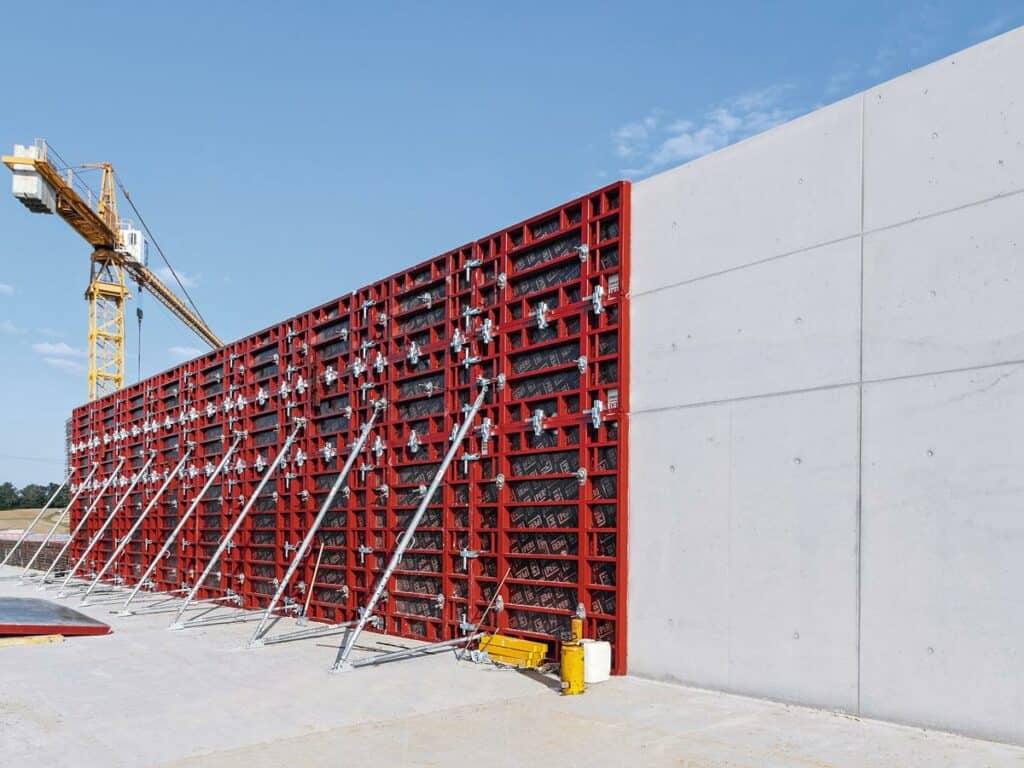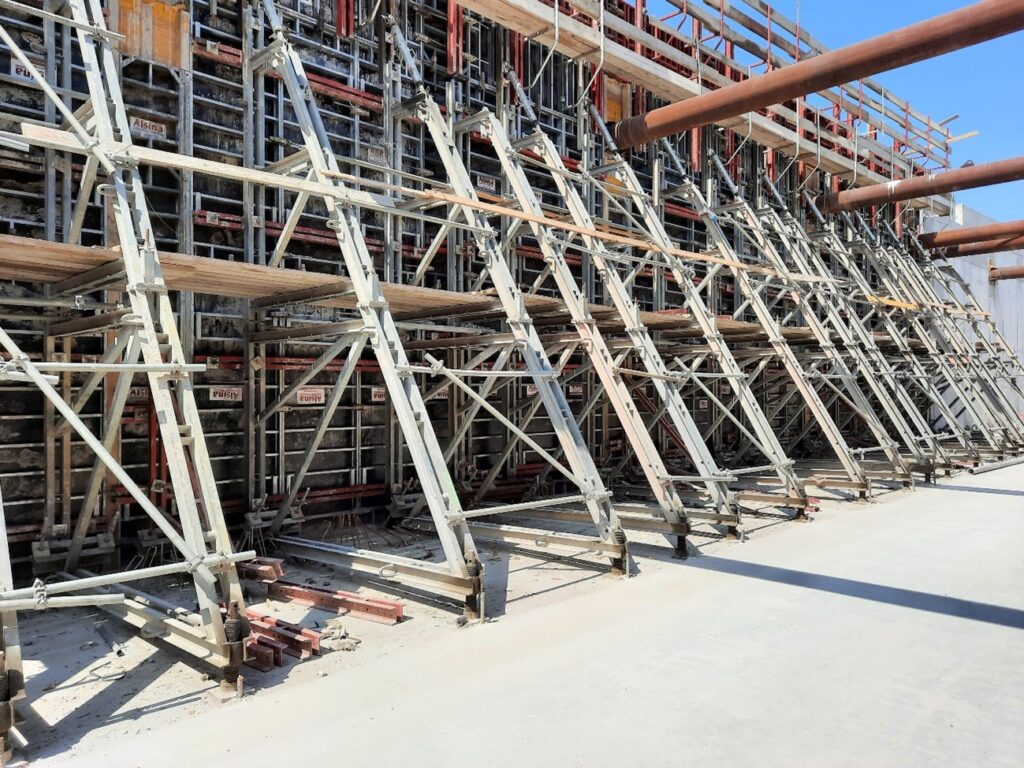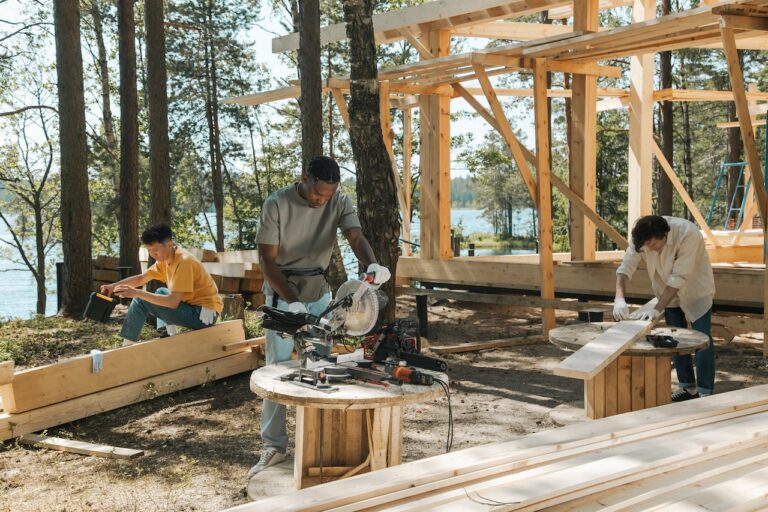Formwork plywood is a versatile material that has become an essential tool in the field of architecture. Its unique characteristics and numerous applications have made it a favorite among architects and designers alike. In this article, we will explore the various uses of formwork plywood in innovative architectural projects, and how it is revolutionizing the way buildings are constructed.
Understanding Formwork Plywood
Before delving into its applications, let’s start by understanding what concrete form plywood is and how it differs from regular plywood. Formwork plywood, also known as shuttering plywood, is specifically designed for use in concrete forming. It is manufactured using a combination of high-quality timber veneers, which are bonded together using phenolic resin to create a strong and durable material.
Formwork plywood is distinct from regular plywood due to its enhanced strength, water resistance, and ability to withstand the pressure exerted by wet concrete. These characteristics make it the ideal choice for creating temporary molds or formwork that holds the concrete in place until it sets and gains its full strength.
The Basics of Formwork Plywood
Formwork plywood comes in standard dimensions of 4 feet by 8 feet, with a thickness ranging from 1/4 inch to 1 1/4 inches. The plywood sheets are usually coated with a smooth phenolic film, which not only provides a smooth surface finish to the concrete but also protects the plywood against moisture and other external factors.
The edges of formwork plywood are typically sealed with a waterproof paint or tape to prevent water ingress and further enhance its longevity. The sheets are then secured together using adjustable metal braces, creating a tight and sturdy formwork system.
See Also: How To Select Good Quality Of Concrete In Sydney
Key Characteristics of Formwork Plywood
One of the primary advantages of formwork plywood is its exceptional strength-to-weight ratio. Unlike traditional timber formwork, formwork plywood is lightweight, yet incredibly robust, making it easy to handle and assemble on-site.
Another notable characteristic of formwork plywood is its resistance to moisture and weathering. This ensures that the plywood retains its structural integrity, even in harsh environmental conditions. Additionally, the smooth phenolic film coating prevents concrete from adhering to the surface, making the formwork easy to clean and reuse.
Furthermore, formwork plywood offers excellent dimensional stability, meaning it maintains its shape and size even when exposed to changes in temperature and humidity. This stability is crucial in ensuring that the formwork remains accurate and consistent throughout the concrete pouring process, resulting in a high-quality finished product.
Additionally, formwork plywood is designed to be highly versatile. It can be easily cut and shaped to fit various formwork requirements, allowing for the creation of intricate and complex concrete structures. This adaptability makes formwork plywood a preferred choice for architects and contractors seeking to push the boundaries of design.
Lastly, formwork plywood is known for its durability and long lifespan. With proper care and maintenance, it can be reused multiple times, reducing waste and overall project costs. This sustainability aspect makes formwork plywood an environmentally friendly choice for construction projects.
The Role of Formwork Plywood in Architecture
Formwork plywood plays a crucial role in both the construction and interior design aspects of architecture. Let’s explore how it is utilized in each of these domains.
Formwork plywood, a durable and versatile material, not only serves as a practical tool in architecture but also contributes to the aesthetic appeal of a structure. Its impact goes beyond mere functionality, adding a layer of visual interest and sophistication to architectural designs.

Formwork Plywood in Building Construction
In building construction, formwork plywood is used to create temporary molds that hold the concrete in place until it cures and gains sufficient strength. This allows architects and contractors to shape complex structures, such as curvilinear walls and architectural features, with ease.
Formwork plywood’s flexibility and easy customization make it an invaluable tool in constructing innovative and visually striking buildings. Moreover, its quick assembly and disassembly contribute to reducing construction time and costs, making it a preferred choice among developers.
When it comes to sustainable construction practices, formwork plywood stands out as an eco-friendly option. Its reusability and durability make it a sustainable choice for projects aiming to reduce environmental impact. By opting for formwork plywood, architects and builders can align their designs with green building standards and principles.
Formwork Plywood in Interior Design
In interior design, formwork plywood offers endless possibilities for creating unique and eye-catching spaces. It can be used to craft bespoke furniture pieces, such as shelves, cabinets, and even entire partitions.
The smooth finish provided by the phenolic film coating gives formwork plywood an elegant appearance, making it suitable for modern and minimalist design styles. Its versatility allows architects and interior designers to experiment with various shapes and forms, resulting in truly innovative and captivating interiors.
Furthermore, formwork plywood’s ability to seamlessly blend with other materials opens up a world of design opportunities. Whether combined with glass, metal, or stone, formwork plywood adds a warm and natural element to interior spaces, creating a harmonious and inviting atmosphere.
Innovative Applications of Formwork Plywood
Now that we have explored the fundamental uses of formwork plywood, let’s delve into some of the groundbreaking applications where this material has proven to be a game-changer.
Formwork Plywood in Sustainable Architecture
With the growing emphasis on sustainable and eco-friendly construction practices, formwork plywood has emerged as a sustainable alternative to traditional formwork materials, such as timber and steel.
The use of formwork plywood reduces the demand for natural resources while minimizing waste generated during construction. Furthermore, its durability and reusability significantly contribute to the reduction of environmental impact associated with building projects.
Formwork plywood is not only environmentally friendly but also offers excellent thermal insulation properties, making it an ideal choice for energy-efficient building designs. Its ability to regulate temperature and humidity levels within a structure helps in reducing the overall energy consumption for heating and cooling, thereby promoting sustainable living practices.
Formwork Plywood in Modern Design Trends
Contemporary architecture and design are characterized by their bold and unconventional approach. Formwork plywood provides architects and designers with the freedom to experiment with complex geometries and irregular shapes.
Its ability to bend and mold to desired configurations allows for the creation of visually striking facades, intricate patterns, and even sculptural elements. This opens up new avenues for architectural expression, enabling the embodiment of unique design concepts that were once deemed impossible.
Moreover, formwork plywood’s versatility extends beyond its visual appeal. Its lightweight nature and ease of manipulation make it a preferred choice for creating innovative furniture pieces and interior design elements. From curved seating arrangements to modular storage units, formwork plywood offers endless possibilities for designers to push the boundaries of creativity in various design disciplines.

The Future of Formwork Plywood in Architecture
As technology continues to advance, formwork plywood is expected to undergo further transformations, contributing to the evolution of the architectural industry. Let’s take a glimpse into the potential advancements and predicted trends.
Technological Advancements and Formwork Plywood
Advancements in computational design and digital fabrication techniques have already begun to influence the way formwork plywood is utilized in architecture. Computer numerical control (CNC) machines can now precisely cut and shape formwork plywood sheets, enabling the creation of intricate designs at a faster pace.
Imagine a future where architects can effortlessly translate their complex designs into reality, thanks to the integration of artificial intelligence and machine learning algorithms. These technologies could analyze the structural requirements of a building and generate optimized formwork plywood designs, reducing both time and material waste.
Additionally, the integration of smart materials and sensors into formwork plywood could revolutionize the construction process. Imagine a formwork system that automatically adjusts its shape and rigidity based on environmental factors or building requirements – the possibilities are endless. For example, sensors embedded within the plywood could detect changes in temperature or humidity, triggering the expansion or contraction of the material to ensure a perfect fit.
Predicted Trends in Formwork Plywood Use
As architects and designers continue to push the boundaries of what is structurally and aesthetically feasible, formwork plywood is expected to become an increasingly prevalent material in architectural projects.
With the rising demand for sustainable and adaptable construction methods, formwork plywood’s eco-friendly nature and versatility make it an ideal choice for future architectural endeavors. It is likely that we will see a surge in the use of formwork plywood in projects ranging from residential buildings to commercial complexes and public structures.
Furthermore, the integration of renewable energy technologies within formwork plywood could provide an innovative solution for sustainable building practices. Imagine formwork plywood panels equipped with solar cells, harnessing the power of the sun to generate electricity for the building. This integration of renewable energy sources not only reduces the environmental impact of construction but also contributes to the overall energy efficiency of the structure.
In conclusion, formwork plywood’s unique characteristics and innovative applications have transformed the field of architecture. From enabling the construction of complex structures to providing creative freedom in interior design, this material continues to shape the way buildings are conceived and constructed. With ongoing technological advancements and a growing emphasis on sustainability, formwork plywood is well-positioned to play a pivotal role in the future of architecture.

